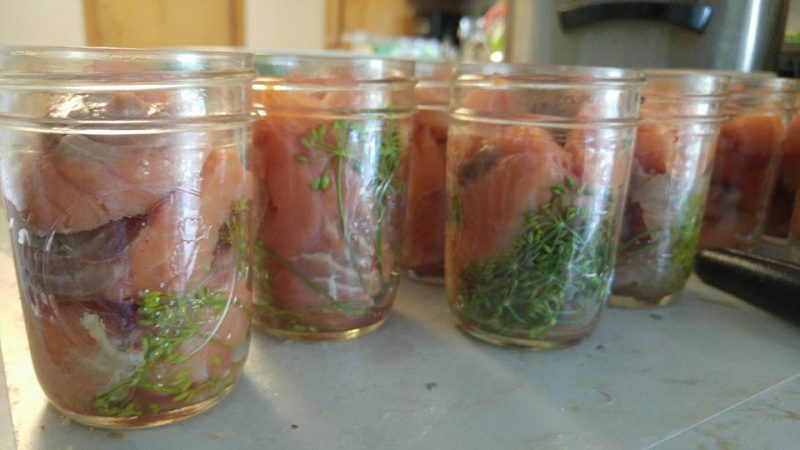More Than One Way to Can a Fish
Randall Bonner 09.27.17

Nothing beats fresh fish, but canning is a great way to preserve your catch while saving precious freezer and fridge space. Putting up cans of fish will allow you to take them with you as meals on the go, send them to friends and family in other parts of the country, and worry less about them being freezer-burned or spoiling during a power outage.
There are a few different canning methods, but the two most common are to place fresh meat directly into a jar with your spices, or you can brine and smoke the fish first, and then place the final product into jars for canning. Either way, these require a pressure canner. All American pressure canners are highly recommended by most food preservers for their durability, reliability and simplicity. All American pressure canners don’t require a rubber gasket, which can easily be lost or damaged, and doesn’t always stand up to the test of time.

Keep in mind what you plan to do with your canned fish when deciding on jar size. If you want snacks on the go, try smaller jars. If you’re planning to feed a family, try larger jars. Remember that your fish will last several years after you’ve canned them, so you want to make sure you are sizing everything appropriately so that it’s used and isn’t just sitting on a shelf because the jars they’re in are too big or too small.
Jars should also be sterilized first, even if purchased new, along with lids and rings. Use a water bath canner for the jars, and a small pot for the lids and rings. You’ll need a pair of jar tongs as well as a magnetic lid lifter for the lids and rings. These tools, along with a little tender loving care during the process, will prevent you from burning yourself while removing your items from their boiling water bath.
If you’re choosing to can your fish fresh, you’ll need to add some salt to each jar. You can experiment with dill, lemon, peppers, etc., but my personal experience with this is that while most of these items are aesthetically pleasing when you place them in the jar, then they end up being mush when you pull them out after they’ve been cooked in the canner. A little bit goes a long way when you’re working with spicy peppers, because they infuse with the fatty oils from the fish. Try a few different things to see what you like, and set aside a few jars that are simply meat and salt, so you have a basis for comparison.
If you’re choosing to can your fish smoked, keep in mind that it doesn’t take long for the flavor to take hold when it’s in the smoker. You can adjust your run time in the smoker to keep the fish from overcooking during the canning process, but if you don’t fully cook the fish in the smoker, you’ll need to can it within 24 hours. Doing this will prevent moisture loss in the final product, and lessen the intensity of the smoked flavor. Add your spices to the fish after you remove it from the brine, and allow the fish to air dry (use a fan to speed up the process). Once the meat becomes tacky and develops a pellicle, place it in the smoker and cook it low and slow, between 120 and 150 degrees, depending on the thickness of the fillets. After a 2- to 3-hour smoke, remove the fish and let it cool. I personally prefer to remove the skin so scales don’t end up in the canned fish later, but this is also optional.

Regardless of the process you decide to use to can your fish, you’ll need to run the pressure canner for 110 minutes with a 10-pound weighted gauge and 11 on the dial gauge, adjusting for altitude. You can check Ball/Kerr’s fresh preserving altitude chart on their website. Allow the canner to cool and the dial gauge to return to 0 before you take off the weight and open it. Then pull your jars out and place them onto a towel to cool.

The “pop” sounds the jar make during the cooling process is the sound of success. If they don’t seal, the lid will budge when you press it in the center. This shouldn’t happen, but on the rare occasion it does, put that fish away in the fridge and enjoy it tomorrow. Once they have cooled, check to make sure they have all sealed, and pack the rest away for a rainy day.


